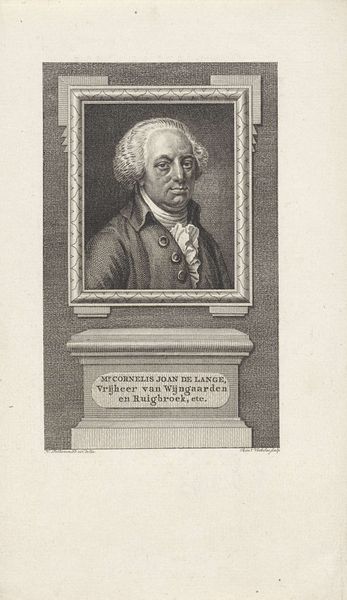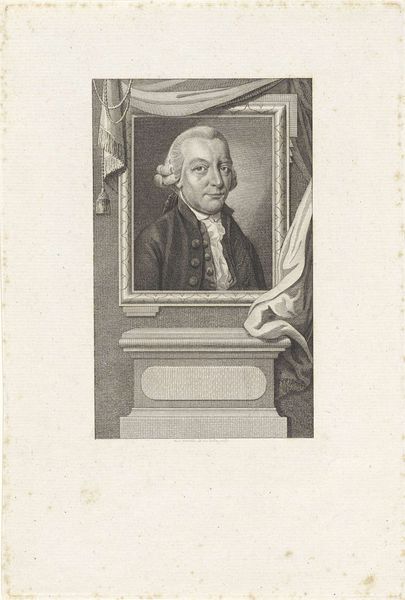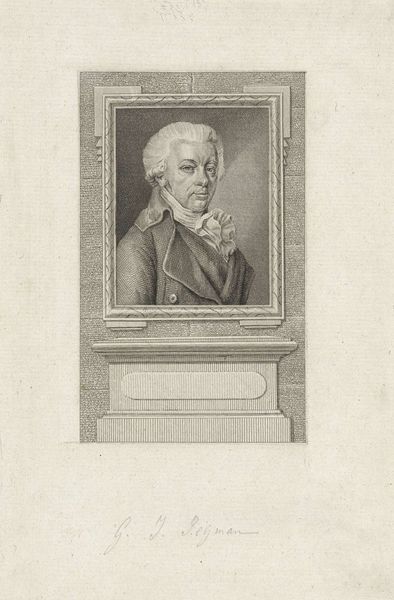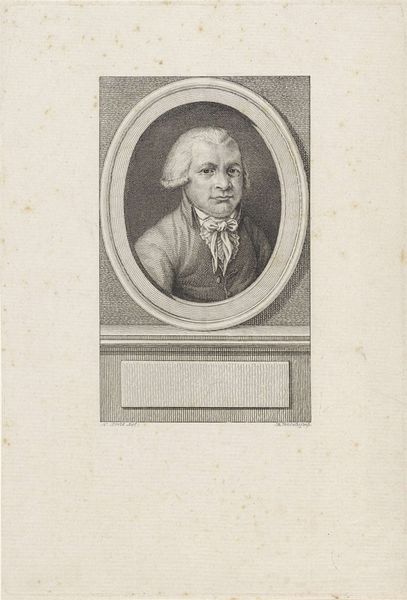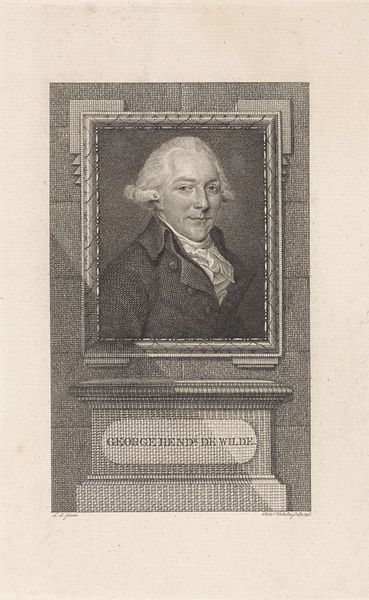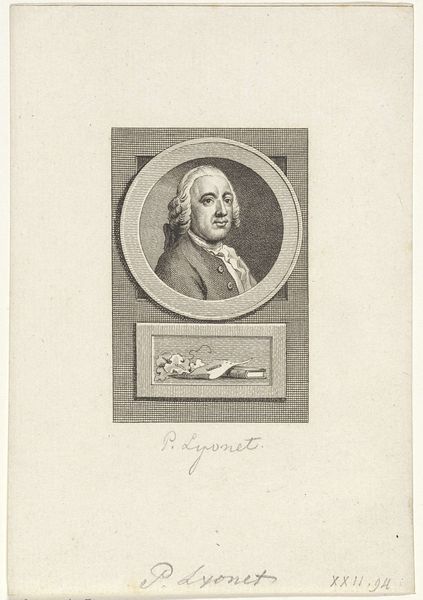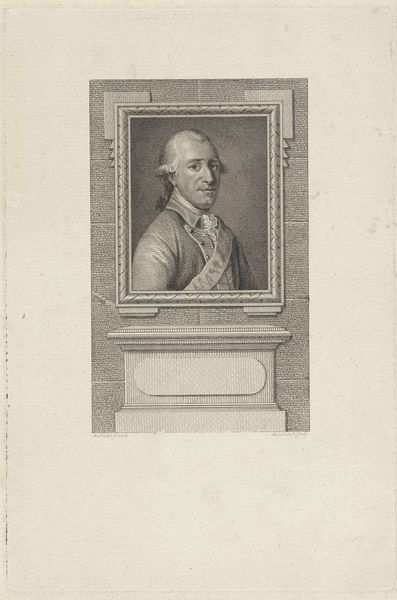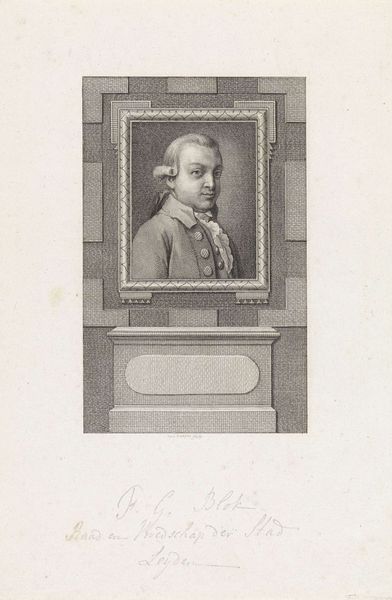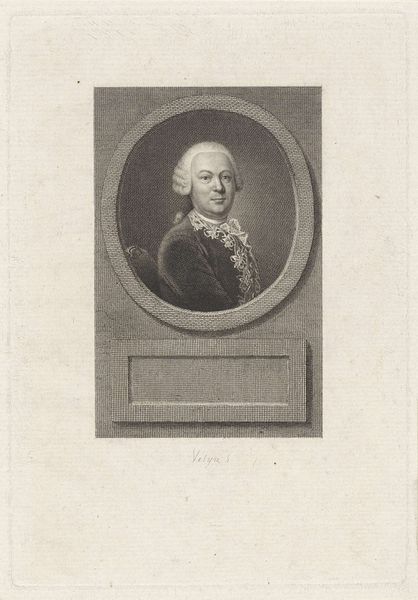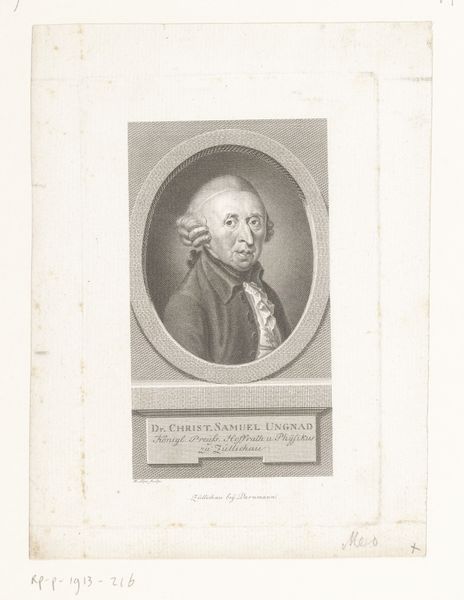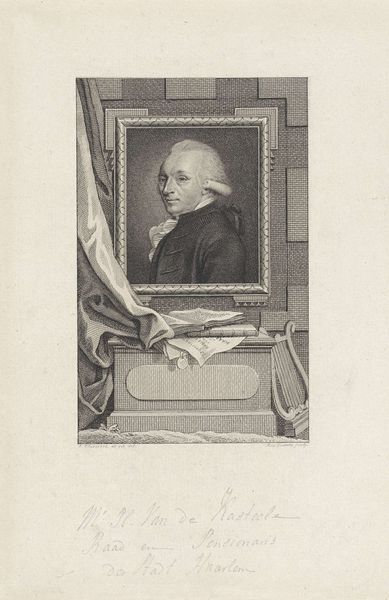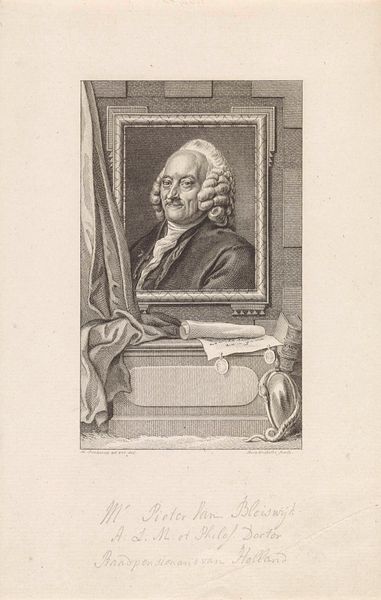
drawing, print, ink, engraving
#
portrait
#
drawing
#
neoclacissism
# print
#
old engraving style
#
ink
#
pencil drawing
#
engraving
Dimensions: height 230 mm, width 155 mm
Copyright: Rijks Museum: Open Domain
Curator: Immediately, I notice the striking precision in this work. The details in the rendering of the face are impressive, given the constraints of the medium. Editor: We’re standing before a print titled “Portret van Sicco Douwes van Aylva,” created in 1794 by Reinier Vinkeles. It's an engraving, and the subject is portrayed in a bust-length portrait, neatly framed. Curator: Yes, the formal qualities—the clean lines, the balanced composition—speak volumes. The artist really commits to the conventions of neoclassicism here. We can discuss his choice to embed the image within another geometrical frame. The interplay of rectangles is very self-conscious, declaring its status as an object of thought and design. Editor: The artwork's austere setting definitely conveys an impression of authority and decorum. Given the subject, Sicco Douwes van Aylva, was a Frisian nobleman and a member of the States General, such formality wouldn't be surprising. It reinforces the sitter’s social position. Curator: Indeed, note the rendering of the hair, and the precisely tailored coat, contributing to the figure's aura. The tonal gradations created through hatching are superb, considering we're discussing lines etched on a surface. It allows for convincing realism. Editor: Absolutely. This type of portrait was likely created to circulate an image of status and solidify social networks in a specific historical moment. Printmaking allowed for wide distribution to reach more than just the wealthy elite who had paintings. Curator: Which speaks to a shift in power, and the democratization of portraiture, even if constrained to the bourgeois and elite. The texture achieved by the fine lines creates an intricate network of marks, transforming the flat plane of the print into a representation of three-dimensional space. Editor: It certainly gives us much to think about in terms of the societal and artistic conventions in play at the time. Curator: Indeed. There is something very revealing in the construction of this image as a pure design. It makes it more than just a mimetic portrait. Editor: A worthwhile consideration indeed, looking at both its intrinsic elements and its wider social context.
Comments
No comments
Be the first to comment and join the conversation on the ultimate creative platform.
